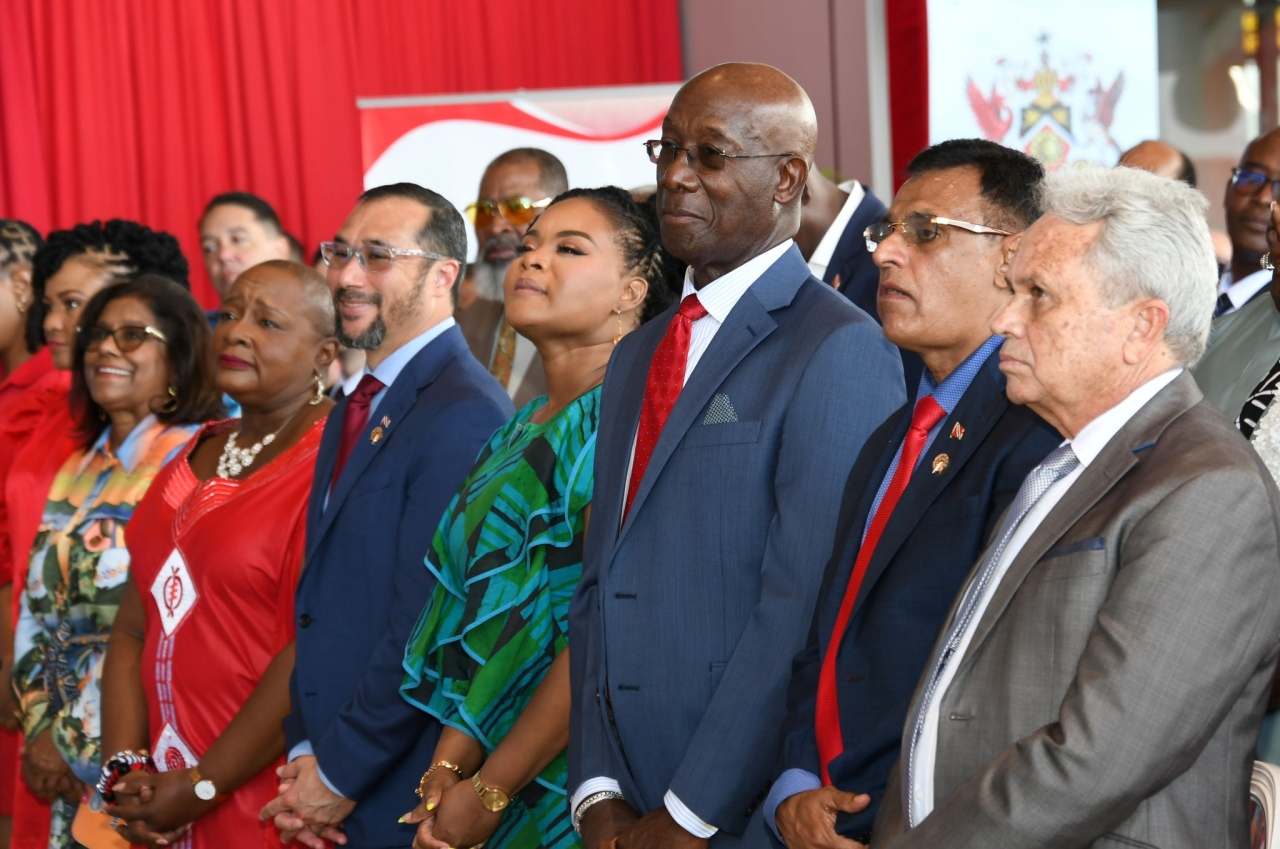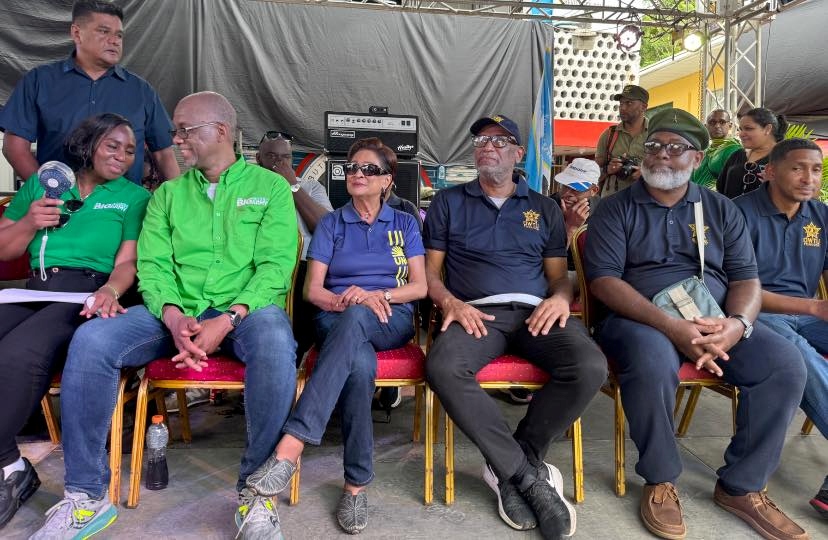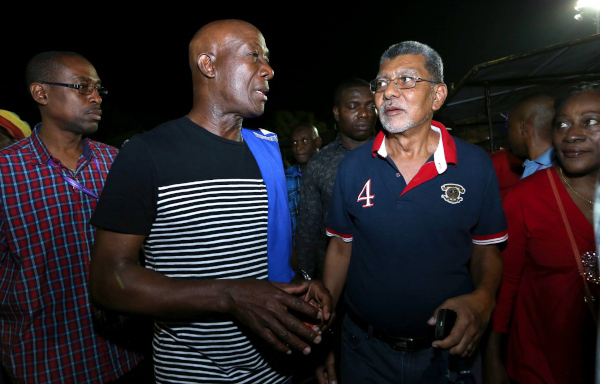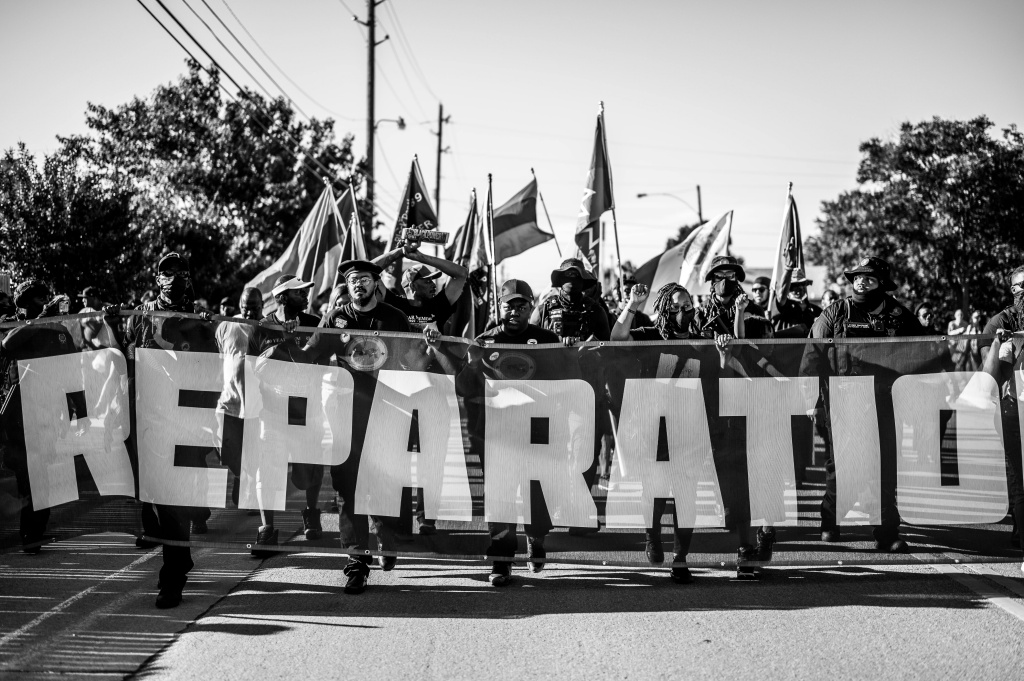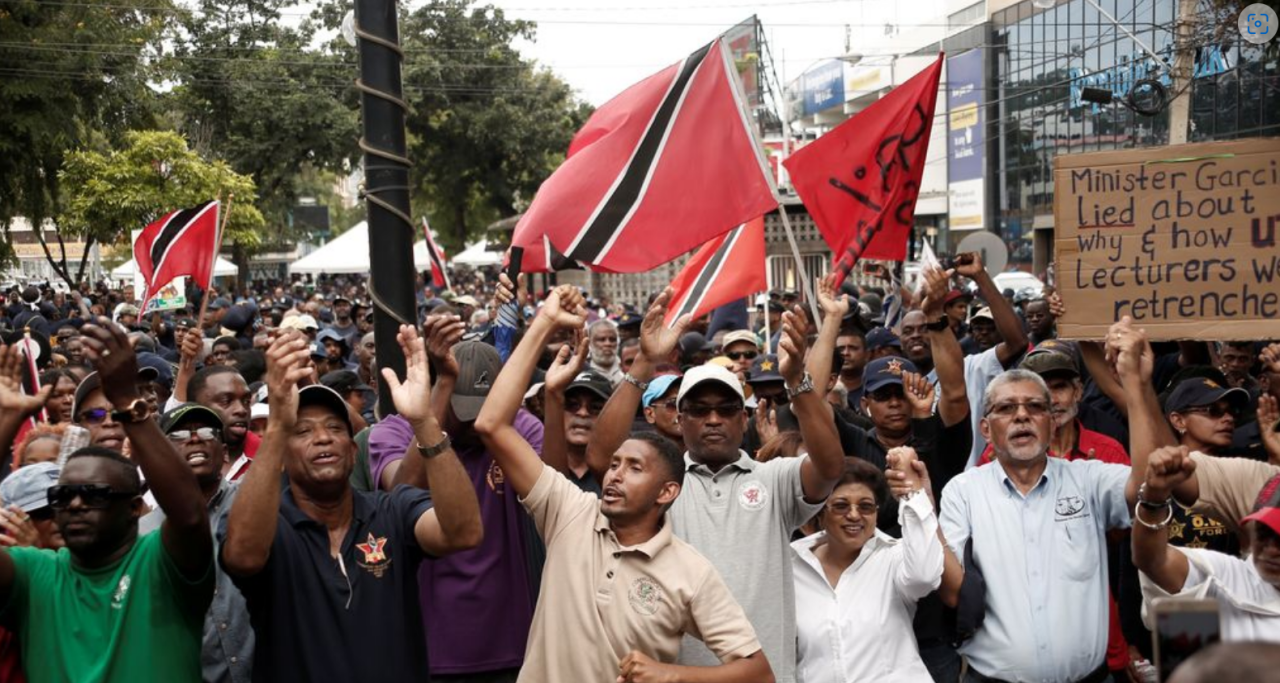“There is a closer nexus between the process of Emancipation Day and Labour Day than many of us seek to understand… According to Brereton, ‘the planters after 1838 wanted to make freedom merely a nominal change in status, while the [formerly enslaved] wanted to win a real economic independence of the planter and his operations; this clash would shape post-emancipation developments in the island’.
“[…] The authorities generally feared that the [former slaves] would now use their new found freedom to attack the colonial political system. The system [they proposed] would ensure that the transition from the relation of master and slave to employer and employee was seamless enough so as to have minimal impact on the underlying power structure of subordinator and subjugated.”
Wired868 columnist and Cipriani College of Labour and Cooperative Studies lecturer Akins Vidale links the ongoing struggle for emancipation with the fight of the trade union movement:

(Courtesy Riomate)
Although the institution of slavery in the British West Indies was abolished in 1838, the act in of itself did not transform the fundamental nature of the plantation societies in the region.
Though extremely critical to production, the use of slave labour—which came to define to the plantation system—was only possible under very specific circumstances. In fact, in the words of Professor Phillips, the plantation system was “less dependent upon slavery than slavery was upon it. … The plantation system formed, so to speak, the industrial and social frame of government […] while slavery was a code of written laws enacted for that purpose.”
As a result, there is a closer nexus between the process of Emancipation Day and Labour Day than many of us seek to understand. The rebellions which took place across the region during the 1930s speak clearly to disappointment of the transition from Chattel slave to waged labourer.
An examination of the British West Indies between 1838 and 1938 is tantamount to an examination of the extent to which those industrial and social frames were transformed to satisfy the basic human needs of the formerly enslaved majority population.
According to Franklin Dukes, social and political institutions set the context for individual and group behaviour and are meant to provide the resources individuals need to survive. How people act and live is shaped in large part by the social structures in which they find themselves. For the enslaved, the plantations were characterised by exploitation, political exclusion, and unequal access to resources.

(Copyright Django Unchained)
“The planters after 1838 wanted to make freedom merely a nominal change in status, while the [formerly enslaved] wanted to win a real economic independence of the planter and his operations; this clash would shape post-emancipation developments in the island.”
Although Brereton is referring specifically to Trinidad, this conflict would continue for 100 years throughout the region.
Michelle Maiese, in a 2003 paper entitled “Social Structural Change”, points to a theoretical frame work within which such an investigation can be carried out. Her paper is focused on the supra structure of societies and examines the attendant characteristics which act as forces that influence and direct the power relations within a society.
She suggests that in particular societies, such as those which this blog has classified plantations as belonging to:
“Structural forces often create a system of winners and losers in which people become trapped in a particular social situation. Structural violence often results, in the form of power inequity, poverty, and the denial of basic human rights.
“Basic human needs go unmet, and groups suffer from inadequate access to resources and exclusion from institutional patterns of decision-making.
“[…] There will be protracted conflict until there are changes made to these basic social structures. And in many cases, if social structural changes are not made, eventually change—oftentimes for the worse—will occur by means of violence.”
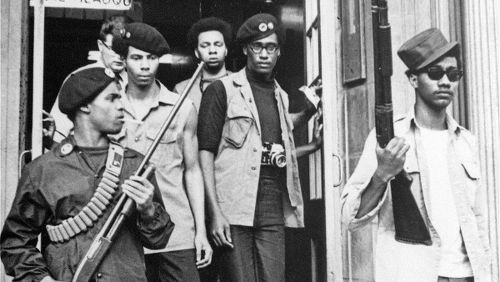
One of the questions which then must be answered is “to what extent do the events of the 1930s find their genesis in the 1830s?” In other words, was there a “protracted conflict” which culminated in the eventual violence of the 1930s and, although the society on the surface did not mirror the society of the 1830s, its substance had remained intact?
In other words, was this conflict fomented by the essence of social structural forces which had remained unchanged over a century in spite of evident changes to the form of the society?
Emancipation in 1838 therefore, has to be seen not as a singular event but rather as a phase on a continuum. Validity must be given to the expectations of the newly emancipated enslaved to determine the extent to which their expectations were met. This is the necessary approach, given that the majority of the population involved in the unrest of the 1930s belonged to this same stratum in the society.
The context being established suggests that the struggle for Emancipation cannot be disconnected from the struggle against the Plantation, where the Plantation as a concept encompasses: “social and political institutions [which] set the context for individual and group behaviour and are meant to provide the resources individuals need to survive.”
The late Eric Williams, in describing the condition in Trinidad and Tobago, aptly summaries the condition of the West Indian Colonies when he states that “(t)he Crown Colony system was based on sugar workers and needed only sugar workers. It did not need citizens. If Trinidad aspired to citizens instead of sugar workers, it necessarily had to achieve the destruction of the Crown Colony system.”
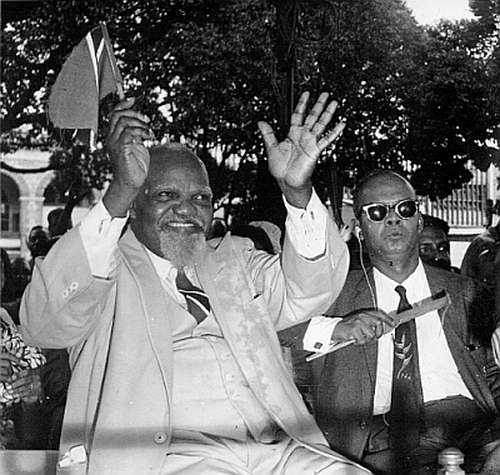
(Copyright Trinidad Guardian)
Ian Belgrave brings our discourse into focus even further in “Dare to Struggle”, where he suggests a similarity between “[the] wave of revolt of such scope and intensity [that it] threatened to engulf the British West Indies in 1832”and “the political reality created by the […] mass movement of the 1930s.”
Both of these were in response to the failure of the authorities to address the fundamental condition of the mass of the population. What it also suggests is that in as much as 1838 was undeniably a watershed, it did not translate into changes in the supra structure of the society; and the masses found themselves engaged in battle for independence from the plantation once again in the 1930s.
The premise therefore, is that the plantation as an institution continued to exist in the 1930s. Although there were changes to several structural aspects of West Indian society, the essence of the power relations defined by the plantation society permeated every aspect of these changes nullifying any possibility for change in substance.
Ultimately what would follow is an assault against the plantation in the 1930s. Given the fundamental importance of the concept of the plantation to addressing the issue, a proper definition is necessary.
George Beckford in his analysis of plantation society in the Caribbean writes that:
“Each plantation was a self-contained unit or territory with ultimate control and jurisdiction—even to the point of deciding the life and death of a slave—vested in the planter. Plantation society was simply the agglomeration of these units in any one country.”

While Beckford provides a broad definition of the concept, the work of Best and Levitt provides greater critical analysis to serve the purpose outlined herein. Their appraisal of the Plantation focuses on it as a specific economic model.
The main hypothesis of this model is: “that the plantation legacy represents an endowment of mechanisms of economic adjustment which deprive the region of internal dynamic. More specifically, it involves patterns of economic distribution which discriminate against economic transformation.”
They go even further and tie the point to the objectives of this inquiry: “The Plantation, […] admits virtually no distinction between economic organisation and society, and chattel slavery which deprives workers of any personal rights.”
Using these frames of the concept of the plantation, the logical considerations would be the extent to which the changes in the society from the time of Emancipation to the 1930s address the “control and jurisdiction vested” in the planter, the extent to which economic transformation was possible and the extent to which workers enjoyed rights in the society.
It should be noted that the primary focus will be on the political elite vis a vis the masses of the working class, where the latter is—for the purpose of this blog—defined as belonging the transitional stratum, which was once occupied by the enslaved.
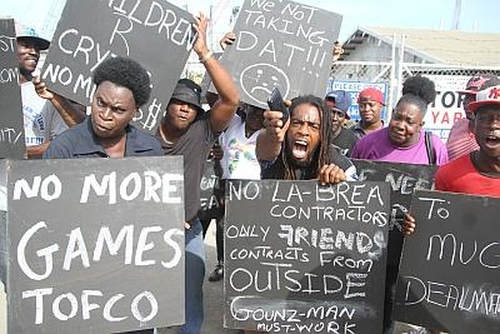
(Copyright Trinidad Guardian/Rishi Ragoonath)
Although the coloured and black middle classes have an undeniable impact on the shaping of the post Emancipation society, the society had always made provisions for a semblance of access to state institutions to be afforded to non-white free groups.
The limitations of this access were not peculiar to this group but were grounded in the supra-structure described above. The same race prejudice and marginalisation experience by that group, on the occasion that they encountered it, could only be reconciled when the race prejudice and marginalisation experienced by the wider mass of the black population was also reconciled.
In that way, limiting the examination of the exploitative nature of the colonial post emancipation state to the impact on the mass of the workers will, of necessity, speak to the very same structures which marginalise the rising coloured and black middle classes.
In the case of Jamaica this has been expressed as follows: “one might say that the net result of British policy in Jamaica in the last years is that without changing the position of the peasant it has created a Jamaican bourgeoisie.”
In fact, the greatest example of this will be spoken to later on, as it is the threat from this same emergent class which forces the elite to relinquish their representative systems for fear of being overrun by this group.
Notwithstanding the acknowledgment of the act of Emancipation as a watershed, the legislative declaration did not mean that these societies had been fundamentally transformed. In fact, it was not enough to satisfy the expectations of those who were enslaved.
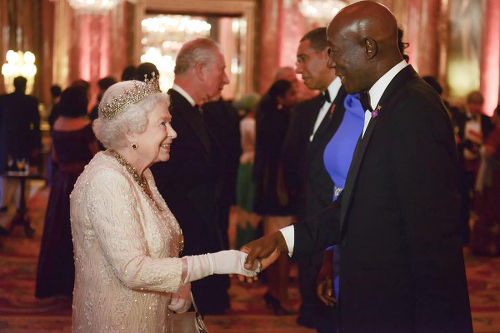
(Copyright Office of the Prime Minister)
“Many blacks did not care for what looked like the Queen’s charity. […] Many apprentices sought to insure the permanence of their freedom through self-purchase.”
Marshall explains this as being due to a lack of trust “in any other agency but themselves to maintain” their freedom. The concerns were not misplaced as “the planters and political elite generally legislated new forms of labour coercion in an effort to counteract freedom and maintain the viability of the plantation enterprise.”
In 1837, when recommendations were made to take away the work houses and eliminate flogging and the use of the treadmill for females, there came a consensus that the Apprenticeship scheme should end completely in 1838. Rather than comply with the recommendations, the planters preferred to end the scheme—hinging on the fact that they would still be able to control the movement of labourers through the licensing and ticketing system.
The authorities generally feared that the workers would now use their new found freedom to attack the colonial political system. The system as outlined was the basis for absolute control. It would ensure that the transition from the relation of master and slave to employer and employee was seamless enough so as to have minimal impact on the underlying power structure of subordinator and subjugated.
It was in these circumstances that the Combination Ordinance, which was designed to prevent the freed slaves from forming trade union organisations, became law in every British Caribbean territory between the period 1838 and 1840.
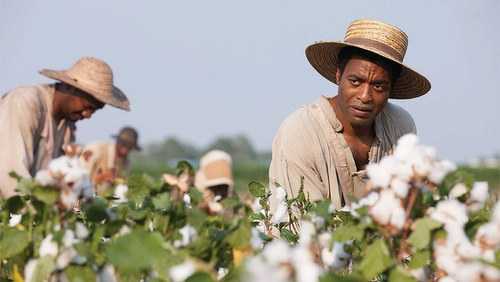
These laws took the view that trade union activity was “injurious to trade and commerce, dangerous to the tranquillity of the country and especially prejudicial to the interest of all who are concerned in them.”
It was clear that it would be the interest of the planter which would dominate and shape the policy for labour legislation for the foreseeable future. In fact, this would be the case for the many decades after, going well into the 1930s.
With the exceptions of Guyana and Jamaica, the workers in the British West Indies in large part were denied trade union representation in the first quarter of the twentieth century. Instead it was left to working class organisations such as the Workingmen’s Associations which emerged throughout the region to take the role of industrial relations negotiator on behalf of workers.
For one hundred years there was no acknowledgement of workers’ right to trade union representation. I am proposing therefore that the incomplete process of Emancipation is well rooted in the continued struggle for workers’ rights.
In the next piece, I will explore the use of legislation to deny any gain in status for the newly Emancipated African and in so doing make a clear case that legislation is a major part of the puzzle to enshrining basic rights.
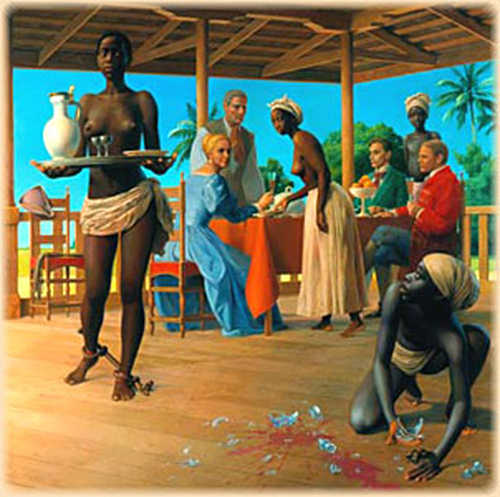
(Courtesy Netssa.com)
Editor’s Note: Click HERE for Part Two, as Akins Vidale shows how legislation was used to preserve the status quo of Trinidad and Tobago’s Plantation Society.
Akins Vidale lectures at the Cipriani College of Labour and Cooperative Studies and is a UWI graduate with a B.A. in History.
He has served as the president of the Trinidad Youth Council and is the General Secretary of the Federation of Independent Trade Unions and NGOs (FITUN).
Read his blog: http://akinsvidale.wordpress.com/
 Wired868 Wired868 for smart sport news and opinion
Wired868 Wired868 for smart sport news and opinion
